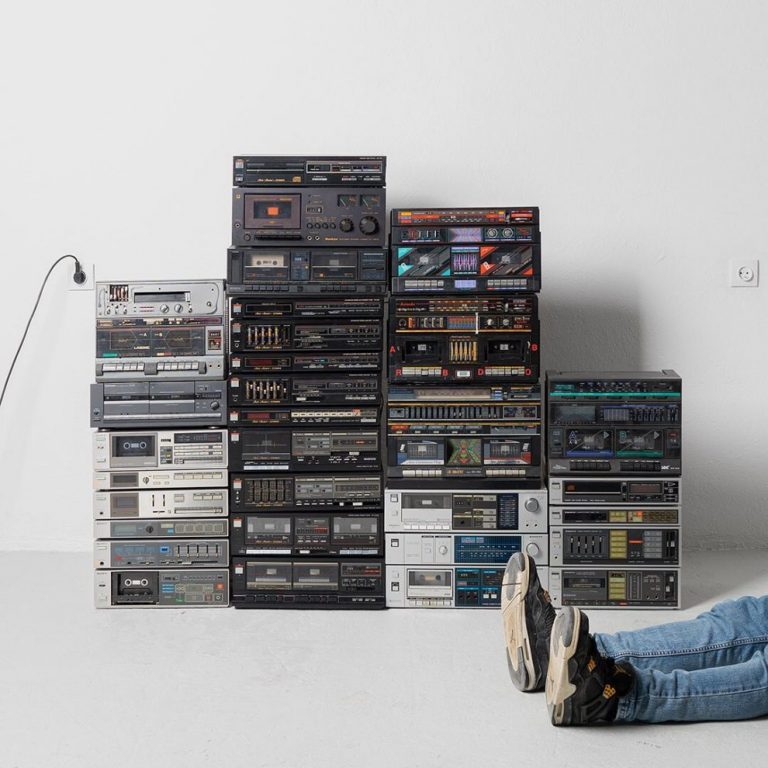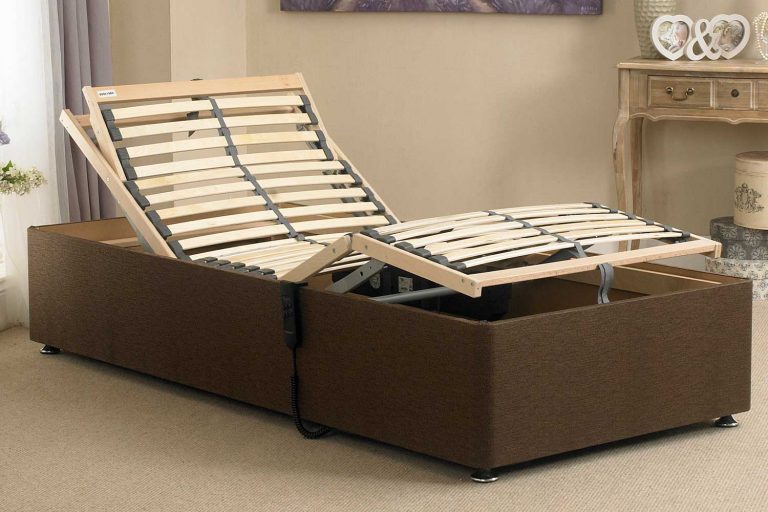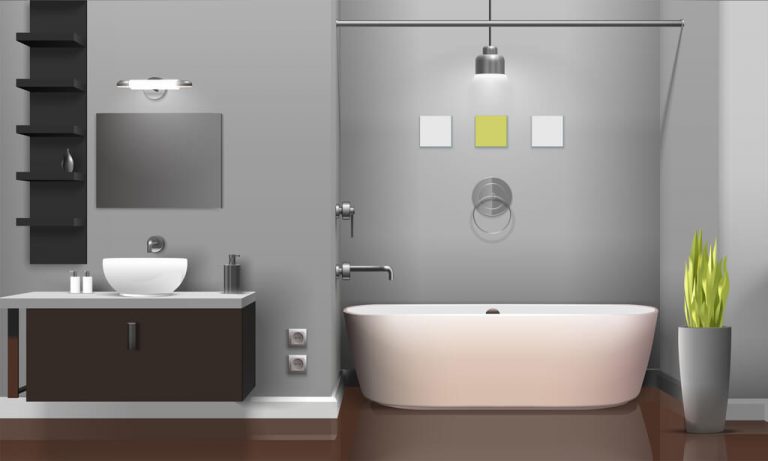We’ve curated the best bedroom wall lighting ideas to help you on your way to creating a dream bedroom scheme. Functional and impactful, wall lighting can make a huge statement within your bedroom ideas.
BEDROOM WALL LIGHTING IDEAS – 17 SMART WAYS TO LIGHT YOUR SPACE
We’ve curated the best bedroom wall lighting ideas to help you on your way to creating a dream bedroom scheme.
1. SET UP WALL LIGHTS BESIDE THE BED

‘In smaller schemes, consider positioning a wall sconce or pendant on either side of the bed, as this will free up valuable table and floor space whilst drawing the eye upwards and giving the illusion of additional space,’ explains Claire Anstey, Lighting Buyer at Heal’s. ‘An elegant bedroom lighting idea, a fixture can also create a designer, boutique hotel room feel as it casts a warm glow throughout the space.’
2. USE WALL LIGHTS IN A SMALL BEDROOM

‘Consider different types of lighting fittings, not just the light they provide,’ advises Peter Bowles, founder and MD, Original BTC. ‘Wall-mounted lights are great space-savers in small, low-ceilinged rooms and are a perfect small bedroom design idea for creating a clean, boutique hotel look.’
Remember to illuminate areas such as dressing tables, wardrobes and reading nooks, where more focused task lighting is required.
3. CHOOSE A LIGHT THAT MATCHES YOUR DECORATING SCHEME

Lighting is no longer just functional; it has become a home accessory and sometimes even a design object. There are so many design-led lights out there with the purpose of injecting personality to your interior design. Don’t just stop with a cool shade when you plan bedroom lighting. Think about the fittings too, like the cord and cable. Make a statement with a bright-colored fabric electrical cord to add some punch and hang them purposefully low for a designer feel.
4. ADD COLOR WITH LIGHTING

Wall-mounted swing-arm bedside lights are a neat way to provide direct and adjustable light for reading in bed, and make for great above the bed decor ideas. In a room deliberately conceived to not feel overly designed, interior designer Beata Heuman suggests choosing shades in different yet complementary colors.
5. POSITION WALL LAMPS ABOVE THE BED

Negate the need for a bedside table by positioning wall lights above the bed. Opting for a lamp that can be wall-mounted allows you the freedom to move secondary furniture around more freely, such as bedside tables. It also means the space isn’t taken up, preventing you using the surface for cups, vases and books.
6. GO FOR AN EYE-CATCHING DESIGN

A big trend for homes, feature wall lighting can be creative, show-stopping or even a little whacky, depending on your style. It can also be used to illuminate shadowy areas and bring artwork or display items into focus. Try to think of the space as a blank canvas and work out where you have sources of natural light, and where you’ll need a helping hand.
‘The lights beside your bed are probably the most important in your home; used daily, they are essential all year round and, what’s more, they are likely to be the most prominent accessories in your bedroom,’ says Lucinda Waterhouse, director at OKA.
7. CHOOSE AN ON-TREND METAL LAMP

Metallic finishes are as popular as ever, especially brass, the metal of the moment. Everything from bedroom ceiling lighting (opens in new tab) to wall lights, to table lamps – even light switches and dimmers with brass finishes – get full marks in the style stakes. With lighting designs being pared back to original shapes, single shade pendants are ideal for monochromatic and neutral bedroom schemes as they stand out.
8. UP YOUR BEDROOM LIGHTING SCHEME

‘Few things are more irritating than not having good-quality light to read by and sometimes a bedside wall light will do the job,’ says lighting designer Sally Storey of John Cullen Lighting.
Good lighting can make a small bedroom feel bigger or add intimacy to a larger room. Bedside lighting is a great idea for beds that you want to make a statement of, but ambient lighting isn’t always enough, so incorporate subtle additions with downlights or uplights.
9. HIGHLIGHT CHARACTERFUL FEATURES

Downlights can be useful as a means of highlighting features, such as the artwork above the bed in this scheme. Choose a fitting with 360-degree rotation for extra flexibility.
10. INCORPORATE READING LIGHTS

A colorful headboard like this one draws the eye in. A pair of discreet, fitted reading lights is an optional, practical addition. Left on before bedtime, they will highlight a striking bedstead as well providing task light. ‘If you’re installing very practical and directional reading lights, make sure they are on separate circuits so that they can be controlled independently of the mood lighting,’ advises interior designer Staffan Tollgård.
11. CREATE A STATEMENT WITH FEATURE LIGHTING

A wall light doesn’t have to be simple, understated or discreet. As well as functional, lighting should be fun. If employing an interior designer, have them work architectural LED wall lights into your bedroom for a truly unique aesthetic. Wall lights that are LED lit are very energy efficient as they use a very minimal amount of power to maintain a high output of illumination.
12. CHOOSE AN ADJUSTABLE OPTION

The continuing popularity of industrial-style lighting, such as workshop adjustable wall lights, show no sign of letting up. ‘These are particularly popular when combined with the traditional style filament light bulbs. The quality, output and colour of LEDs means that they will transform the way we light our homes,’ explains Mark Holloway, Holloways of Ludlow.
13. EMBRACE NATURAL MATERIALS

Introducing wall lamps with woven rattan shades in honey tones is a brilliant way to bring texture and warmth to blue bedrooms – while they may be naturally calming, myriad shades of blue can run the risk of feeling cold, especially in north facing bedrooms rooms.
‘We have seen a growing trend of customers opting for natural materials in their lighting choices – a lovely touch as the illumination thrown around the room through a rattan or wicker shade can create a uniquely different feel than through fabric, often creating a more whimsical aesthetic,’ says Helen Pett, design ambassador at Arteriors London.
As well as bringing vital texture to this stylish space, this wall light from Arteriors serves a key practical purpose helping to free up room on the bedside table, while its adjustable arm makes it ideal for bedtime reading.
14. LAYER UP A RANGE OF WALL LIGHTS

Wall lights in a bedroom needn’t just be about illuminating your bed for reading; they can have other decorative purposes, too.
‘Here, a picture wall light creates yet another soft, glowing pool of light on the wall,’ says Lucy Searle, Editor in Chief of Homes & Gardens. ‘Not only does it show off the artwork, but creates warmth, more layering and interest in the room.’
15. CHOOSE MATCHING SHADED WALL LAMPS

Framing a bed with a matching pair of shaded wall lights is guaranteed to ‘create an elegant tailored approach to the bedroom,’ explains Rohan Blacker, founder of Pooky.
‘Keep bulbs shaded with material as opposed to glass, unless you want to use the light source for reading,’ she adds. Not only do fabric shades give a soft, ambient glow, they are a brilliant way to inject color and texture into a room. To add zest to a neutral bedroom consider teaming shades in an uplifting yellow alongside with vibrant cushions and throws.
‘If you’re a book lover, directional wall lights are far more effective than wall or table lamps with lampshades, but they are far less equipped to create warm, ambient light. Consider whether you have room to install both,’ adds Rohan Blacker.
16. FIT A WALL LAMP TO A BED FRAME

If you have a traditional bedroom furnished with a statement four-poster bed, then finding reading light options can be a challenge. In a clever solution, Henriette von Stockhausen of VSP Interiors has had wall lights discretely fitted into this bed frame to provide light for reading whilst the bed curtains were drawn. ‘Make sure they can be switched off from either side of the bed,’ she says. ‘Vaughan make perfect flexi reading lights, which we often use.’
17. SAVE SPACE WITH SLIMLINE SCULPTURAL WALL LIGHTS

One of the greatest advantages of the wall lamp is its ability to save space, making it a popular bedroom lighting choice with many interior designers. ‘In small bedrooms I really like using wall lights as opposed to table lamps for bedside lighting. Smaller rooms inevitably call for smaller bedside tables and when the full surface is taken up by a table lamp it just seems to defeat the object,’ explains Irene Gunter, founder and creative director, Gunter & Co.
‘There’s such a wealth of amazing wall light options available, whether wired or plug in – they really allow us to add a statement to the space as well as maximise the surface available for the bits and bobs we like to store beside the bed.’
Boasting simple sculptural curves, these contemporary wall lights are the perfect complement to this striking headboard design.
WHERE SHOULD WALL LIGHTS BE PLACED IN A BEDROOM?
Wall lights are best positioned next to, or above, the bed. One on each side is the preferred choice in a double bedroom.
Think of wall lights as accent lights. On their own they probably won’t provide enough light, so it’s best to always consider using them in combination with another light source like ceiling lights or pendants. Most wall lights used to be hardwired and so are best to be planned as part of a renovation project.
However, lots of the newer ones lend themselves to a style where the visible wire is actually trendy and part of the design, especially when it comes to the industrial look. These are very easy to install by just fixing them to the wall, making them perfect for bedrooms.
HOW CAN I IMPROVE MY BEDROOM LIGHTING?
Bedroom lighting needs to be bright in the morning yet intimate and atmospheric at night to provide something of a restful sanctuary at the end of the day,’ advises Sally Storey, Creative Director at John Cullen Lighting.
One of Sally’s top bedroom lighting tips is to consider circuits when planning your bedroom wall lighting ideas: ‘Whatever you do, be sure to have the lights on different circuits with switches by the bed. This is perhaps more important than in other rooms to avoid having to get out of bed to turn everything off.’









